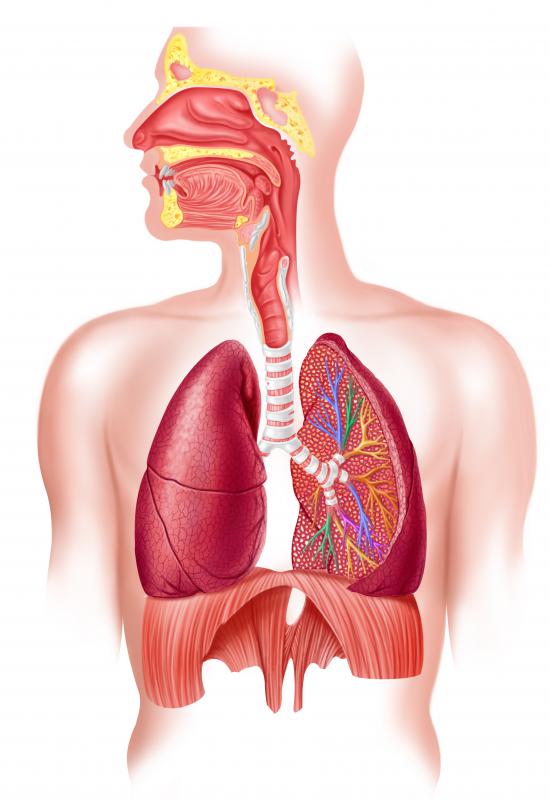At TheHealthBoard, we're committed to delivering accurate, trustworthy information. Our expert-authored content is rigorously fact-checked and sourced from credible authorities. Discover how we uphold the highest standards in providing you with reliable knowledge.
What is the Respiratory Center?
The respiratory center consists of areas of the brain that are responsible for automatic control of breathing. Nerve cells in part of the lower brain stem, known as the medulla oblongata, initiate and set the rhythm of respiration. Another area of the brain stem, called the pons, contains nerve cells that affect the breathing rate. Nerve impulses travel from these areas to the respiratory muscles, causing inspiration and expiration. Chemoreceptor cells situated in the medulla and major arteries detect changes in the levels of oxygen and carbon dioxide in the blood and send nerve impulses to regulate respiration accordingly.
Requiring no conscious thought, respiration happens spontaneously following the rhythmic nerve impulses generated by a group of pacemaker cells in the medulla oblongata. These impulses stimulate motor nerves in the spine that are responsible for controlling the diaphragm and the intercostal muscles of the ribs. The process is arranged in such a way that the nerves supplying the muscles of inspiration and expiration are never active at the same time. A group of nerve cells in the pons, called the pneumotaxic center, forms part of the respiratory center thought to be involved in controlling transitions between inspiration and expiration.

The vagus nerve, which arises in the brain stem and has branches in the lungs, may affect respiration. When the lungs are stretched during inhalation, the nerve is stimulated, causing an inhibitory effect that prevents overinflation. Some voluntary control of breathing is also possible, as when one decides to take a deep breath. This involves cells in the cerebral cortex transmitting nerve impulses via the spine to stimulate the required respiratory muscles.

A chemical regulation system monitors the levels of oxygen, carbon dioxide, and hydrogen ions in the blood, feeding information back to the respiratory center. Chemoreceptor cells sensitive to chemical changes in the blood are situated in the medulla and in carotid and aortic bodies inside the major arteries. If the level of oxygen falls, or the concentration of carbon dioxide or hydrogen ions rises, the chemoreceptors transmit signals to the brain and respiration increases.

Raised carbon dioxide levels in the blood, known as hypercapnia, will initially lead to an increase in respiration. If levels continue to rise the central nervous system becomes depressed, leading to confusion, coma, and death. Hypercapnia may occur in cases of lung failure where breathing has become extremely difficult. This could be caused by chronic obstructive pulmonary disease (COPD), or drugs such as morphine acting on nerve cells in the medulla to cause central respiratory failure. Treatment varies depending on the cause, but options generally involve administration of oxygen, sometimes with the aid of mechanical ventilation.
AS FEATURED ON:
AS FEATURED ON:















Discuss this Article
Post your comments